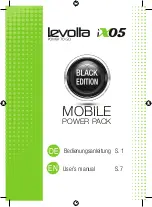
172
IBM Power 720 and 740 Technical Overview and Introduction
concurrent firmware fix pack updates when possible. The determination of whether a
firmware fix pack release can be updated concurrently is identified in the readme file that
is released with the firmware.
Blind swap cassette
Blind swap PCIe adapters represent significant service and ease-of-use enhancements in I/O
subsystem design while maintaining high PCIe adapter density. Blind swap allows PCIe
adapters to be concurrently replaced or installed without having to put the I/O drawer or
system into a service position. Since first delivered, minor carrier design adjustments have
improved an already well-planned service design.
For PCIe adapters on the processor-based servers, blind swap cassettes include
the PCIe slot, to avoid the top to bottom movement for inserting the card on the slot that was
required on previous designs. The adapter is correctly connected by basically sliding the
cassette in and actuacting a latch.
Firmware updates
System firmware is delivered as a release level or a service pack. Release levels support the
general availability (GA) of new function or features, and new machine types or models.
Upgrading to a higher release level is disruptive to customer operations. IBM intends to
introduce no more than two new release levels per year. These release levels will be
supported by service packs. Service packs are intended to contain only firmware fixes and
not to introduce new function. A
service pack
is an update to an existing release level.
If the system is managed by a management console, you use the management console for
firmware updates. By using the management console, you can to take advantage of the
Concurrent Firmware Maintenance (CFM) option when concurrent service packs are
available. CFM is the IBM term used to describe the IBM Power Systems firmware updates
that can be partially or wholly concurrent or nondisruptive. With the introduction of CFM, IBM
is significantly increasing a client’s opportunity to stay on a given release level for longer
periods of time. Clients that want maximum stability can defer until there is a compelling
reason to upgrade, such as the following reasons.
A release level is approaching its end-of-service date (that is, it has been available for
about a year and hence will go out of service support soon).
Move a system to a more standardized release level when there are multiple systems in
an environment with similar hardware.
A new release has new functionality that is needed in the environment.
A scheduled maintenance action will cause a platform reboot, which provides an
opportunity to also upgrade to a new firmware release.
The updating and upgrading of system firmware depends on several factors, such as whether
the system is stand-alone or managed by a management console, the current firmware
installed, and what operating systems are running on the system. These scenarios and the
associated installation instructions are comprehensively outlined in the firmware section of
Fix Central:
http://www.ibm.com/support/fixcentral/
You might also want to review the best practice white papers:
http://www14.software.ibm.com/webapp/set2/sas/f/best/home.html
Usage: Blind swap casettes are used in the Power 750, Power 760, Power 770,
Power 780, and Power 795 servers.
Содержание Power 720 Express
Страница 2: ......
Страница 14: ...xii IBM Power 720 and 740 Technical Overview and Introduction ...
Страница 128: ...114 IBM Power 720 and 740 Technical Overview and Introduction ...
Страница 204: ...190 IBM Power 720 and 740 Technical Overview and Introduction ...
Страница 205: ......
















































